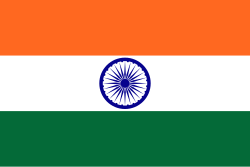Debates and factors
According to the report named "Indian Century: Defining India's Place in a Rapidly Changing Global Economy" by IBM Institute for Business Value, India is predicted to be among the world's highest-growth nations over the coming years. [11] [12] [13]
As per a report released by Federation of Indian Chambers of Commerce & Industry (FICCI) and McKinsey & Company titled "India’s Century – Achieving sustainable, inclusive growth", India has the potential to become an "economic superpower" before its 100th year of Independence (2047). [14] [15]
India is a member of Build Back Better World and has also created North–South Transport Corridor as an alternative to the Belt and Road Initiative policy initiative of China (PRC), [16] [17] [18] to link in with Iran, Russia, the Caucasus, and Central Asia. In 2017, India and Japan [19] [20] joined together to form the Asia-Africa Growth Corridor in order to better integrate the economies of South, Southeast, and East Asia with Oceania and Africa. [19] [20] India also engages in the Quadrilateral Security Dialogue and in Malabar (naval exercise) as part of a China containment policy.
|
| Top five countries by military expenditure in 2023 [21] |
One of the key factors includes its populous democracy. [22] [23] According to a United Nations report, India overtook China to become the world's most populous nation in 2023. [24] Its size and location in Asia and the Indian Ocean poises it to play a significant role in matters around the world, as demonstrated during its time in the British Empire, though this history is also a factor in China's opposition to India's rise. [25]
Economists and researchers at Harvard University have projected India's 7% projected annual growth rate through 2024 will continue to put it ahead of China, making India the fastest growing major economy in the world. [26] [27] In 2017, the Center for International Development at Harvard University published a research study [28] projecting that India has emerged [28] as the economic pole of global growth by surpassing China and is expected to maintain its lead over the coming decade. [28]
India has very recently been considered either a major great power or to be emerging as such (well beyond middle powers) and is generally considered an emerging superpower due to its large and stable population and its rapidly growing economic and military sectors. [29]
This page is based on this
Wikipedia article Text is available under the
CC BY-SA 4.0 license; additional terms may apply.
Images, videos and audio are available under their respective licenses.


